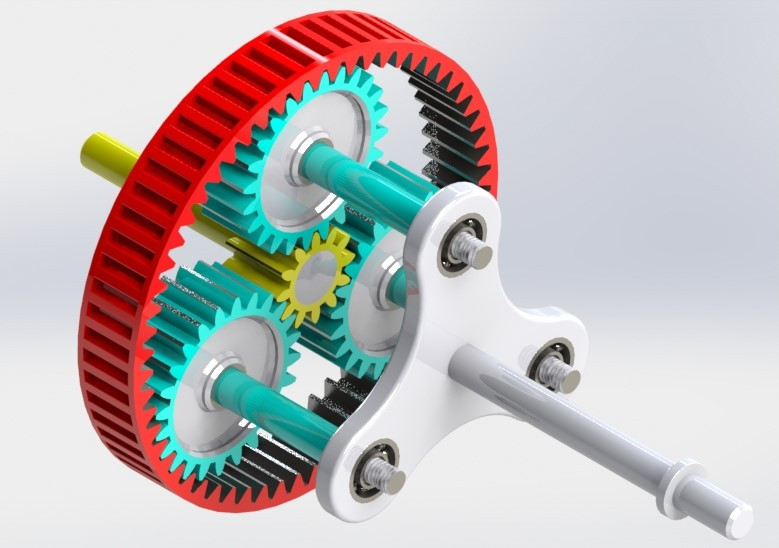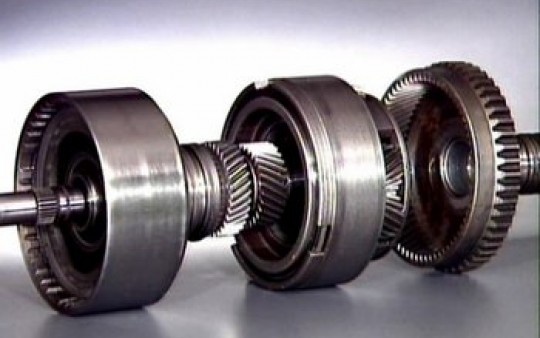Product Description
Product Description
Product Parameters
| Item | Spur Gear Axle Shaft |
| Material | 4140,4340,40Cr,42Crmo,42Crmo4,20Cr,20CrMnti, 20Crmo,35Crmo |
| OEM NO | Customize |
| Certification | ISO/TS16949 |
| Test Requirement | Magnetic Powder Test, Hardness Test, Dimension Test |
| Color | Paint , Natural Finish ,Machining All Around |
| Material | Aluminum: 5000series(5052…)/6000series(6061…)/7000series(7075…) |
| Steel: Carbon Steel,Middle Steel,Steel Alloy,etc. | |
| Stainess Steel: 303/304/316,etc. | |
| Copper/Brass/Bronze/Red Copper,etc. | |
| Plastic:ABS,PP,PC,Nylon,Delrin(POM),Bakelite,etc. | |
| Size | According to Customer’s drawing or samples |
| Process | CNC machining,Turning,Milling,Stamping,Grinding,Welding,Wire Injection,Cutting,etc. |
| Tolerance | ≥+/-0.03mm |
| Surface Treatment | (Sandblast)&(Hard)&(Color)Anodizing,(Chrome,Nickel,Zinc…)Plating,Painting,Powder Coating,Polishing,Blackened,Hardened,Lasering,Engraving,etc. |
| File Formats | ProE,SolidWorks,UG,CAD,PDF(IGS,X-T,STP,STL) |
| Sample | Available |
| Packing | Spline protect cover ,Wood box ,Waterproof membrane; Or per customers’ requirements. |
Our Advantages
Why Choose US ???
1. Equipment :
Our company boasts all necessary production equipment,
including Hydraulic press machines, Japanese CNC lathe (TAKISAWA), Korean gear hobbing machine (I SNT), gear shaping machine, machining center, CNC grinder, heat treatment line etc.
2. Processing precision:
We are a professional gear & gear shafts manufacturer. Our gears are around 6-7 grade in mass production.
3. Company:
We have 90 employees, including 10 technical staffs. Covering an area of 20000 square meters.
4. Certification :
Oue company has passed ISO 14001 and TS16949
5.Sample service :
We provide free sample for confirmation and customer bears the freight charges
6.OEM service :
Having our own factory and professional technicians,we welcome OEM orders as well.We can design and produce the specific product you need according to your detail information
Cooperation Partner
Company Profile
Our Featured Products
| Application: | Motor, Electric Cars, Motorcycle, Machinery, Marine, Agricultural Machinery, Car |
|---|---|
| Manufacturing Method: | Cast Gear |
| Toothed Portion Shape: | Spur Gear |
| Material: | Stainless Steel |
| Type: | Circular Gear |
| Sample Service: | Free |
| Samples: |
US$ 0/Piece
1 Piece(Min.Order) | |
|---|
| Customization: |
Available
| Customized Request |
|---|

What are the advantages of using epicyclic gears in automotive transmissions?
Epicyclic gears, also known as planetary gears, offer several advantages when used in automotive transmissions. Here’s a detailed explanation:
1. Compact Design:
Epicyclic gears provide a compact design, allowing automotive transmissions to be more space-efficient compared to other gear arrangements. This is particularly beneficial in modern vehicles where available space is limited. The compactness of epicyclic gears enables manufacturers to design smaller and lighter transmissions, resulting in overall weight reduction and improved vehicle fuel efficiency.
2. Gear Ratio Flexibility:
Epicyclic gears offer a wide range of gear ratios through the combination of the sun gear, planet gears, and ring gear. This flexibility allows automotive transmissions to provide multiple gear ratios, enabling smooth gear shifting and optimal engine performance across various driving conditions. Epicyclic gear systems can incorporate different gear sets and stages to achieve specific gear ratios, enhancing the vehicle’s acceleration, towing capabilities, and fuel economy.
3. Efficient Power Transmission:
The design of epicyclic gears facilitates efficient power transmission. The multiple planet gears distribute torque evenly across the gear system, minimizing power losses and improving overall transmission efficiency. This efficiency is particularly important in automotive transmissions, where efficient power transfer is vital for the vehicle’s performance and fuel economy.
4. Torque Multiplication and Gear Reduction:
Epicyclic gears can be configured to provide torque multiplication or gear reduction, depending on the arrangement of the gears. This capability is utilized in automotive transmissions to increase torque output during low-speed or high-load conditions, such as when starting from a standstill or climbing steep hills. Torque multiplication improves the vehicle’s drivability and towing capacity, enhancing its overall performance.
5. Smooth and Seamless Gear Shifts:
Epicyclic gears contribute to smooth and seamless gear shifts in automotive transmissions. The design allows for overlapping engagement of gears during gear shifting, minimizing the interruption of power delivery and providing a smoother transition between gears. This results in improved driving comfort and reduced wear on transmission components.
6. Durability and Reliability:
Epicyclic gears are known for their durability and reliability, making them well-suited for automotive applications. The design distributes load and wear among multiple planet gears, reducing stress on individual gear teeth and prolonging the lifespan of the transmission. Additionally, the compact and enclosed nature of the gear system provides protection against contaminants and external elements, further enhancing its reliability.
These advantages make epicyclic gears a popular choice in automotive transmissions, as they contribute to improved vehicle performance, fuel efficiency, and overall driving experience.

How do epicyclic gears contribute to reducing gear wear and noise?
Epicyclic gears, also known as planetary gears, offer several advantages that contribute to reducing gear wear and noise. Here’s a detailed explanation:
1. Load Distribution:
The arrangement of multiple planet gears in an epicyclic gear system helps distribute the load evenly across the gear teeth. This load distribution minimizes stress concentration on individual gear teeth, reducing the risk of wear and fatigue failure. By sharing the load, epicyclic gears can handle higher torque levels while reducing the wear on specific gear teeth.
2. Increased Tooth Contact Ratio:
Epicyclic gears typically have a higher tooth contact ratio compared to other gear types, such as spur or helical gears. The tooth contact ratio refers to the number of teeth in contact at any given time. A higher tooth contact ratio results in a smoother distribution of load and reduces localized contact stresses. This helps to minimize wear and noise generation during gear operation.
3. Balanced Loading:
The design of epicyclic gears allows for balanced loading of the gear teeth. The load is distributed among multiple planet gears, and each gear tooth engages with multiple teeth on both the sun gear and the ring gear simultaneously. This balanced loading helps to minimize tooth deflection and backlash, reducing wear and noise generation.
4. Lubrication:
Epicyclic gears benefit from effective lubrication due to their design. The gear teeth are constantly immersed in the lubricant, which helps reduce friction and wear. Proper lubrication also helps to dampen vibrations and reduce noise generated during gear operation.
5. Controlled Speed and Load Transitions:
Epicyclic gears can provide smooth speed and load transitions due to their ability to change gear ratios. When transitioning from one gear ratio to another, the gear engagement can be carefully controlled to minimize sudden shocks or impacts, which can contribute to wear and noise. The controlled speed and load transitions in epicyclic gears help reduce gear wear and noise levels.
6. Precision Manufacturing:
Epicyclic gears are often manufactured with high precision to ensure accurate gear meshing and minimize manufacturing errors. Precise gear manufacturing helps to maintain proper alignment and minimize tooth misalignment, which can lead to increased wear and noise.
In summary, the load distribution, increased tooth contact ratio, balanced loading, lubrication, controlled speed and load transitions, and precision manufacturing of epicyclic gears all contribute to reducing gear wear and noise. These factors make epicyclic gears a favorable choice in applications where minimizing wear and noise levels is important.

What is an epicyclic gear and how does it function?
An epicyclic gear, also known as a planetary gear, is a gear system that consists of one or more outer gears, an inner gear, and a central gear, known as a sun gear. Here’s a detailed explanation of how it functions:
1. Gear Arrangement:
In an epicyclic gear system, the sun gear is located at the center and is surrounded by multiple outer gears, also called planet gears. The planet gears are typically mounted on a carrier, which allows them to rotate around the central sun gear.
2. Gear Engagement:
The teeth of the planet gears mesh with both the sun gear and an outer ring gear, also known as the annular gear. The annular gear has internal teeth that engage with the planet gears and external teeth that provide the outer boundary of the gear system.
3. Input and Output:
The input and output connections can be achieved in different ways depending on the design. Typically, the sun gear serves as the input shaft, while the carrier or the annular gear acts as the output shaft. The rotation of the input shaft (sun gear) causes the planet gears to orbit around it and rotate, resulting in the output shaft’s motion.
4. Gear Ratios:
An essential feature of epicyclic gears is their ability to provide different gear ratios by changing the arrangement of the gears. By holding one component stationary, such as fixing the annular gear or the carrier, and driving another component, the gear system can achieve various speed and torque combinations.
5. Gear Functions:
Epicyclic gears have several useful functions in mechanical systems, including:
- Speed reduction: By fixing the sun gear and rotating the carrier or the annular gear, the output speed can be reduced compared to the input speed.
- Speed increase: By fixing the carrier or the annular gear and rotating the sun gear, the output speed can be increased compared to the input speed.
- Directional changes: Changing the gear engagement arrangement allows reversing the direction of rotation between the input and output shafts.
- Torque multiplication: By utilizing the gear ratios, an epicyclic gear system can multiply or divide the torque between the input and output shafts, providing mechanical advantage.
- Braking: By holding specific components, such as the sun gear or the carrier, the gear system can act as a brake, preventing rotation or controlling the speed of the output shaft.
Epicyclic gears find applications in various mechanical systems, including automotive transmissions, gearboxes, power tools, and robotics, due to their compact size, versatility, and ability to achieve multiple gear ratios within a single gear system.


editor by CX 2023-09-28